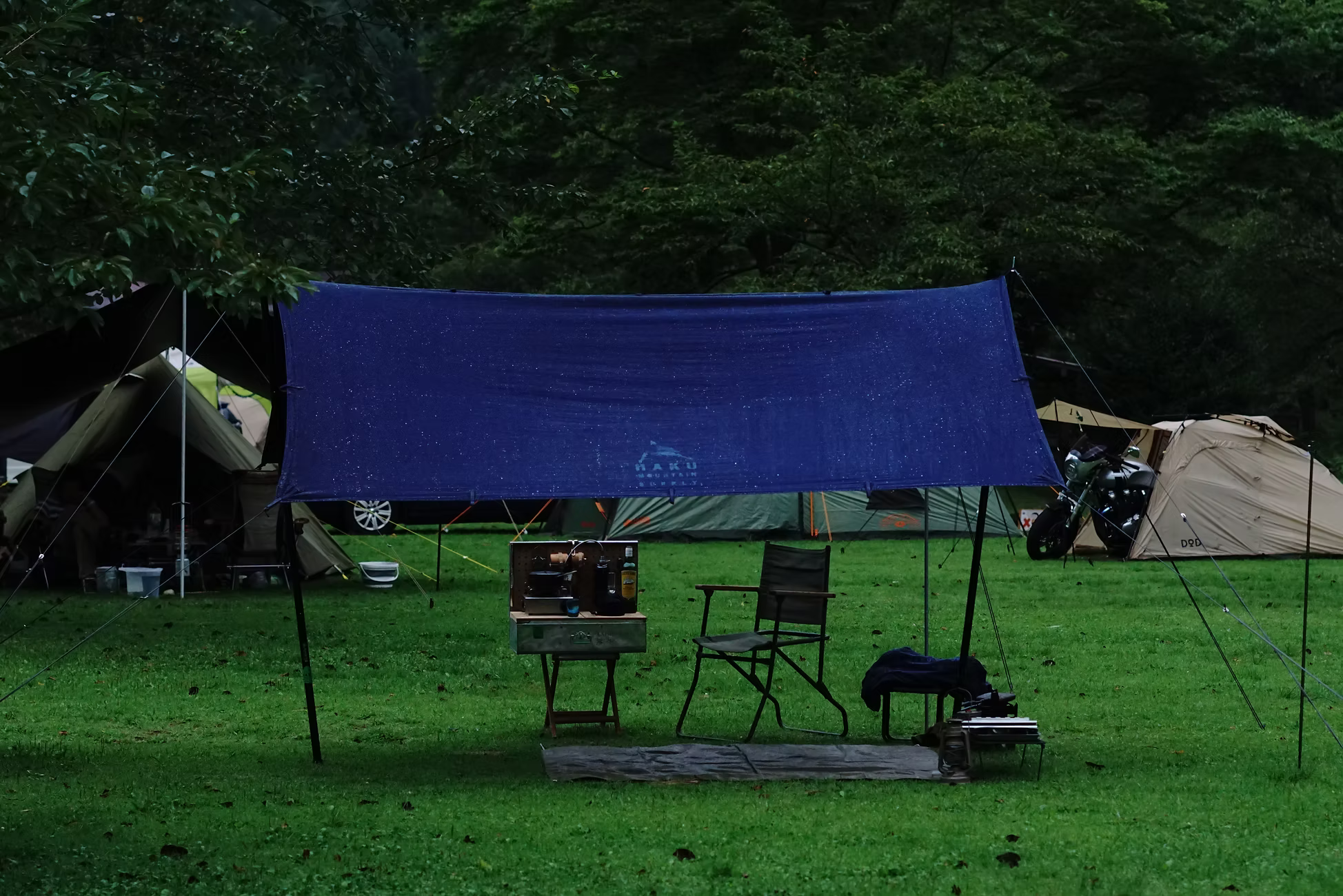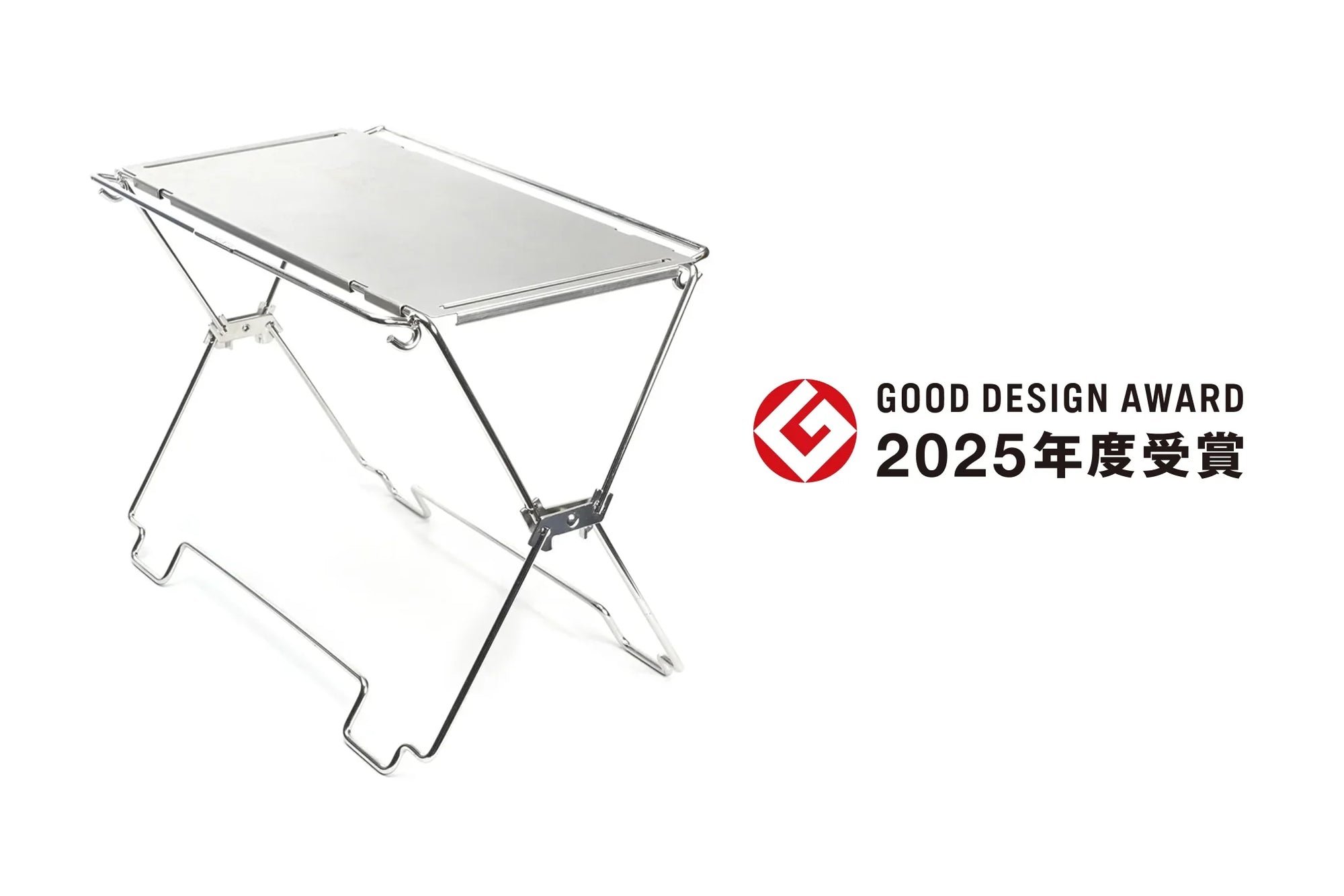There's a distinct flow to how I spend my time visiting Snow Peak's HQ1 Campfield and Field Suite Spa in Niigata Japan - it took me a few times of going through the routine to fully understand and see how in so many beats it is a mirror to how the day starts. And each evening, as the sun begins to set, the process kicks off.
I've touched a bit on these moments in past articles about using Snow Peak to bolster your travel experiences in Japan, but this is an opportunity to unpack one of them in particular, and one that I've shared is worth traveling to Japan to experience alone, dining at Snow Peak's Restaurant Seppou.
This article will cover what a full course meal looks like at the restaurant. It's important to say "looks like" and not "is" because the menu changes daily. If you stay at the HQ1 Campfield for two nights, and attend two dinners, you'll have to completely different sets of dishes (sans the post-dinner coffee which I strongly encourage). We've covered an overview of dining here already in this article from last year, so we won't get into deep detail about pricing and meal types.
Before The Meal
As the sun begins to set rather early in this part of the country during the Spring and Fall, often as early as 3:00pm will the first signs of golden hour's approach begin to show themselves. It's with this that I pack up a change of clothes, my first for the day, and take the short walk from my site to the Spa. It's a nice trip, I take the opportunity to say hello to fellow campers, and quietly check out some setups.

At the Spa I'll check in, get my towel and toiletries and make my way downstairs. The Spa is an experience worthy of its own rituals and moments of reflection, and once they have been performed and I am feeling refreshed around 30 minutes to an hour later I'll make my way back out the door.
Just around the corner from the Spa is a Snow Peak Eat. But I'm not here for food. Instead I rehydrate with a cold glass of water and dehydrate with a colder glass of beer. It's a moment to catch my breath, the Spa, while not a physically demanding experience is an incredibly physical one - and you're wise to not jump right into the next activity.

Replenished, I make my way upstairs. It's now 6:00 and time for the reservation I booked.
The Menu
As they knew I was coming, the table is set and menu laid out before me. It's not to choose from, I had already requested that when making my reservation. But to inform me of what will be shared. It's brief, listing the title of the course and the primary components.

It's shortly after that the staff will come over to bring a glass of water, like everything at Seppou it's a brief interaction that avoids the overbearing of many places and allows focus on yourself, or your dining partner.
It's in this space that tradition is also bucked from typical Japanese dining. There's no 'tsumimasen' hand raise required to order, or to refill your water. The staff attends to you, and all that entails, as they would at any Michelin rated restaurant.
Your meal is then outlined, and any allergens can be shared as you also opt for any drink pairings you would like to partake in.
Dish One, Pacific Saury
The waiter will return a short time later with the first dish. As it's gently placed and prepared for you to enjoy a deeper understanding of what it is gets shared. My Japanese is basic, and the staff is more than able to accommodate communicating in English. For some more abstract concepts of the plate a translation app may come out so it can be properly conveyed.

Saury, a type of Mackerel, is often enjoyed grilled, dried, or pickled. Here, it is diced and formed into a ball with and fried. Citrus slices are served on top offering contrast in four of the five senses. The fried crust is crisp without excess oil - the saury provides enough oil and fat on its own that any more would push it over the edge. It's light, a starter course that with salt and fat brings the palette to life and prepares it for what's to come.
Bread Course
Unlisted on the menu, slices of bread are served. Baked on-site, and served with local butter and a dash of salt. The warmth turns to steam as each chunk is torn off. The bread is uniform, with a thin soft crust, much like the milk bread served at cafes and found on conbini sandwiches.

Dish Two, Surf Clam, Leek
Dishes are quickly whisked away, including the eating utensils which are changed based on how the dish should be consumed. Gone are the fork and knife, and in their place a small tea spoon is offered. While hot and aromatic like a soup, this Chawanmushi (meaning steamed in a cup of tea) is more similar to a savory custard.

The salt and fat of the previous dish has lingered, and as the mild flavors of the leek and clam connect with the tongue their remnants greet like acquaintances. Friendly, but without a deep conversation.
Dish Three, Tilefish
As the meal builds in scale, the grilled dish arrives. Not conceptual or attempting to be something it's not - the serving looks closely to how so many meals in Japan are made with a coal-fired grilling and light seasoning.

Tilefish is a departure from much of the fish I'd consumed thus far on the trip. Tropical in nature, it flakes easily before quickly melting as chewed. It avoids the brine and saltiness of mackerel, opting instead for a flavor that welcomes the addition of the bedding of lotus root and sauce not unlike tonkatsu decorating the plate.
Dish Four, Mackerel
There's a beauty in the storytelling that makes up the totality of a meal served like this. Similar to how music can be enjoyed as a full album to uncover more about how the artist was feeling, and what may be understood by listening to songs in their intended order.
As I enjoyed sips from my next Sake pairing, sliced Mackerel shashimi was served giving me the expectation of flavors that were missing, but not lacking, in the prior plate.

Served rather traditionally, with a dash of soy and wasabi leaves there's no pressure to mix and dip on your own. Enjoying each bite the flavors of the fish are allowed to shine without being masked or bullied into submission with a large dunk of soy sauce.
Dish Five, Wagyu Beef
By now it should be clear that the underlying intent behind this series of dishes was to stand with tradition in what was being served and how, while gently nudging them into 2024 when this meal was served. It should be no surprise then, that the final dish would be what Japan may be most associated with culinarily outside of Sushi and Ramen: beef.
Wagyu beef can be found nearly everywhere you look in the country. Each izakaya will have some version, and going to places like Osaka will see street vendors selling 3oz cuts of the meat to tourists late into the night. But here, Seppou makes it a point to distinguish themselves from cow to the dish in front of you.
The cows are raised locally to Niigata and the Tsubame-Sanjo region, with the farmer opting to raise only 20-30 per year. With such care and limited stock, each cow can easily surpass $30,000 when sold.
Grilled to a perfect medium rare, the three one-ounce pieces are served warm but not hot. Cut and eaten with a fork and knife, as expected they quickly soften in the mouth - not melting to a mush but become as effortless to chew as ice cream.

Each piece is best enjoyed savored, taking your time to reflect on not just how it ended up in front of you, but how you got here as well. The end of the meal is approaching, and it's likely you're realizing just how much weight you typically carry in your shoulders, and how light they feel at this moment.
Final Dish, Takikomi Gohan
Your waiter returns with the final dish - but unlike each that precedded it the food is not yet placed before you. Instead the donabe pot is presented, slowly opened revealing the fish and vegetables cooked inside. It is shown to you for approval - the pot is yours to enjoy weather you want one cup of rice or multiples, it isn't shared with any other tables.

Enjoy it with your miso slowly, as rice is so symbolically linked to eating in Japan that meals like breakfast, lunch, and dinner are translated to morning, afternoon, and evening rice.

Dessert & Coffee
At this point I need to be upfront, it had taken me a lot of effort to break myself out of the enjoyment of each plate to take these photographs and remember the details of the meal. But here I write, nearly 6 months after the fact with the flavors, textures, tastes and smells all still so vividly imprinted that I can put them to paper.
However, by the time I reached this point I seemingly forgot to continue my documentation. So, like a good meal, and a good dessert, I'll leave you wanting a little bit more.
I've said this before to the staff of Seppou, to readers of this magazine, and even further up in this article. The full experience is one that is worth the trip to Japan alone. I leave the restaurant and sleep the best I have slept, I wake up refreshed and energized, and I admire the benefits of a ritual - not only as I partake in of their dining, but that Seppou creates so that even visit separated by years are enjoyed at the same quality.




